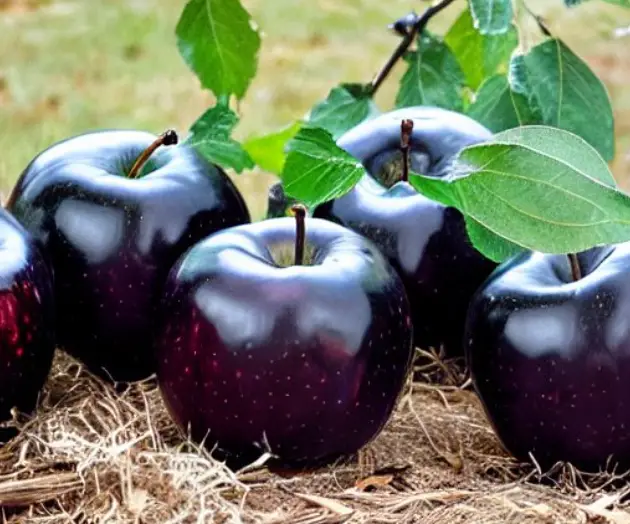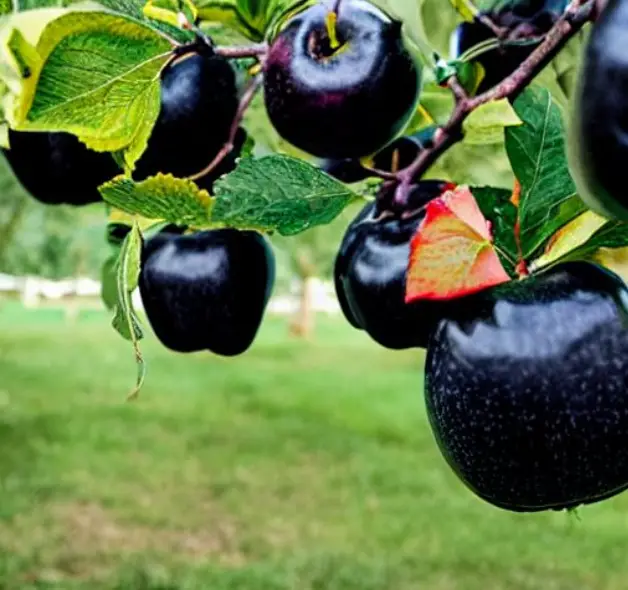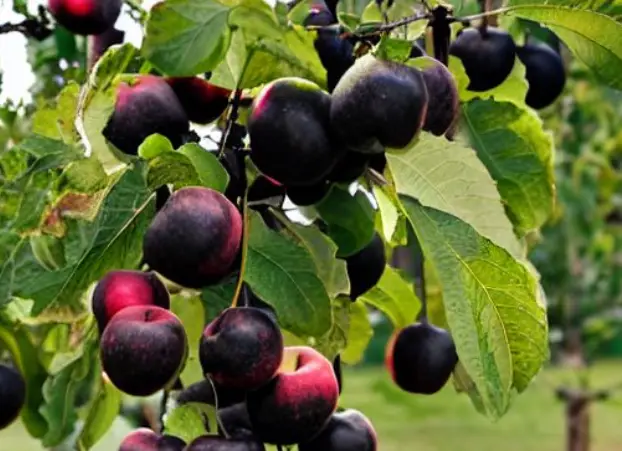
Introduction
Arkansas Black apples are a unique variety of apple that are known for their deep purple-black color and complex flavor profile. In this guide, we’ll explore the history of Arkansas Black apples, their characteristics, and how to eat and cook with them.
History of Arkansas Black Apples
Arkansas Black apples are believed to have originated in Arkansas in the mid-1800s. They quickly became popular for their flavor and their ability to store well over the winter months. Over the years, they have become a beloved variety of apple in the southern United States and beyond.
Characteristics of Arkansas Black Apples
Appearance: Arkansas Black apples are a medium-sized apple with a deep purple-black color that almost looks black. They have a smooth, shiny skin and a distinctive shape that’s wider at the bottom than at the top.
Taste and texture: Arkansas Black apples have a complex flavor profile that’s both sweet and tart, with notes of cinnamon and spice. They have a firm texture that holds up well when cooked.
Uses: Arkansas Black apples are versatile and can be used in a variety of ways. They are great for snacking, baking, and cooking. They also make excellent cider.

Eating Arkansas Black Apples
Best enjoyed fresh, as their unique flavor profile shines through. They can also be paired with a variety of cheeses, nuts, and other fruits for a delicious and healthy snack. Additionally, Arkansas Black apples can be sliced and added to salads for a crunchy texture and a pop of flavor.
Nutritional benefits: Arkansas Black apples are a great source of fiber, vitamin C, and antioxidants. They are also low in calories and fat, making them a healthy addition to any diet.
Cooking with Arkansas Black Apples
Recipes using Arkansas Black apples: Arkansas Black apples are a great ingredient for a variety of sweet and savory dishes. They work well in pies, tarts, and crisps, as well as in savory dishes like roasted pork and apple chutney. Check out some of our favorite recipes below:
- Arkansas Black Apple Pie: This classic recipe highlights the unique flavor of Arkansas Black apples. Top with a scoop of vanilla ice cream for a delicious dessert.
- Arkansas Black Apple Crisp: This easy recipe is perfect for a cozy fall night. Serve with a dollop of whipped cream or a scoop of vanilla ice cream.
- Roasted Pork Tenderloin with Arkansas Black Apples: This savory recipe is a great way to use up extra Arkansas Black apples. The sweet and tangy flavor pairs perfectly with juicy pork tenderloin.
Tips for cooking with Arkansas Black apples: When cooking with Arkansas Black apples, it’s important to choose apples that are firm and ripe. They hold up well when cooked, but can become mushy if they are too soft. Additionally, consider pairing them with warm spices like cinnamon and nutmeg to bring out their natural flavor.

Arkansas Black Cider
History of Arkansas Black cider: Like many varieties of apples, these apples are also great for making cider. In fact, they were a popular choice for cider makers in the 1800s. Today, Arkansas Black cider is still enjoyed by many cider enthusiasts.
How to make Arkansas Black cider: To make Arkansas Black cider, start by washing and chopping the apples into small pieces. Place the apple pieces into a large container and use a cider press to extract the juice. Ferment the juice using yeast for several days until it reaches the desired level of sweetness and carbonation.
Arkansas Black Pie
History of Arkansas Black pie: Arkansas Black apples are also a great choice for making pie. The rich, complex flavor pairs well with warm spices like cinnamon and nutmeg, making it a favorite among pie enthusiasts.
Recipe for Arkansas Black pie: Check out this easy recipe for Arkansas Black apple pie:
Ingredients:
- 6 cups sliced Arkansas Black apples
- 3/4 cup white sugar
- 2 tbsp cornstarch
- 1 tsp cinnamon
- 1/4 tsp nutmeg
- 1/4 tsp salt
- 1 tbsp unsalted butter
- 1 double pie crust
Instructions:
- Preheat oven to 375°F.
- In a large bowl, combine sliced apples, sugar, cornstarch, cinnamon, nutmeg, and salt.
- Roll out half of the pie crust and place it in a 9-inch pie dish. Fill with the apple mixture.
- Cut the butter into small pieces and dot over the top of the apples.
- Roll out the second half of the pie crust and place it over the top of the apples. Crimp the edges to seal.
- Cut several slits in the top crust to allow steam to escape.
- Bake for 45-50 minutes, until the crust is golden brown and the filling is bubbling.
Visiting an Arkansas Black Orchard
If you’re interested in learning more about this apple and how they’re grown, consider visiting an Arkansas Black orchard. Here are a few things to keep in mind:
- Research local orchards: Use resources like Google and Yelp to find orchards in your area that grow Arkansas Black apples. Check their website or social media pages to see if they offer tours or events.
- Plan ahead: Most orchards have specific hours of operation and may only be open during certain times of the year. Be sure to plan ahead and schedule your visit accordingly.
- Dress appropriately: Remember that orchards are often located in rural areas and may have uneven terrain. Wear comfortable shoes and dress for the weather, as you may be outdoors for an extended period of time.
- Ask questions: When visiting an orchard, take the opportunity to ask questions about how the apples are grown and harvested. The growers are often happy to share their knowledge and passion for their craft.
Conclusion
Arkansas Black apples are a unique and flavorful variety that are worth trying. Whether you enjoy them fresh, baked into a pie, or fermented into cider, there are many ways to experience the complex flavor profile of these apples. Consider visiting a local orchard to learn more about how they’re grown and harvested, and don’t be afraid to experiment with different recipes in the kitchen.
